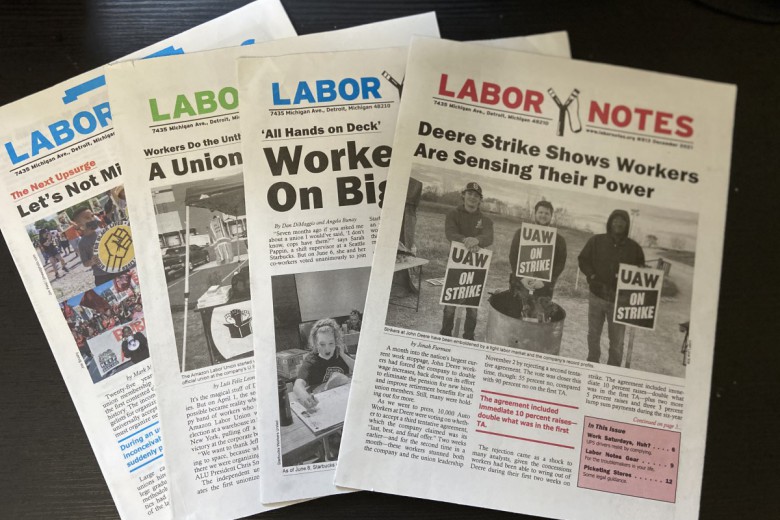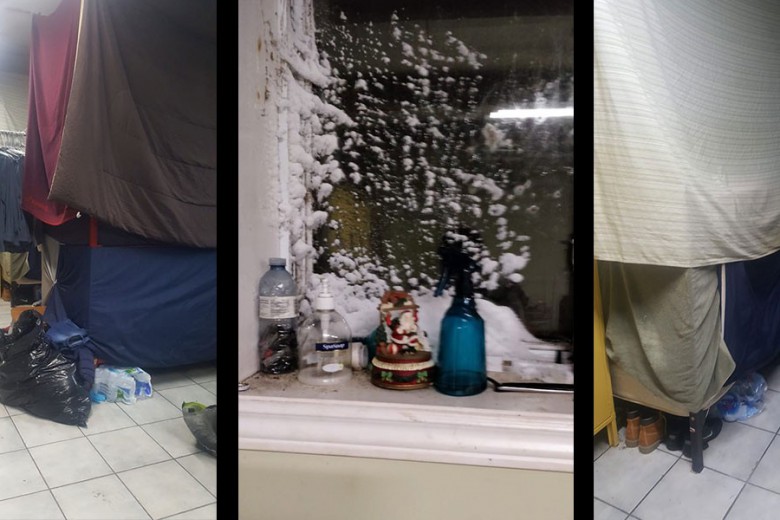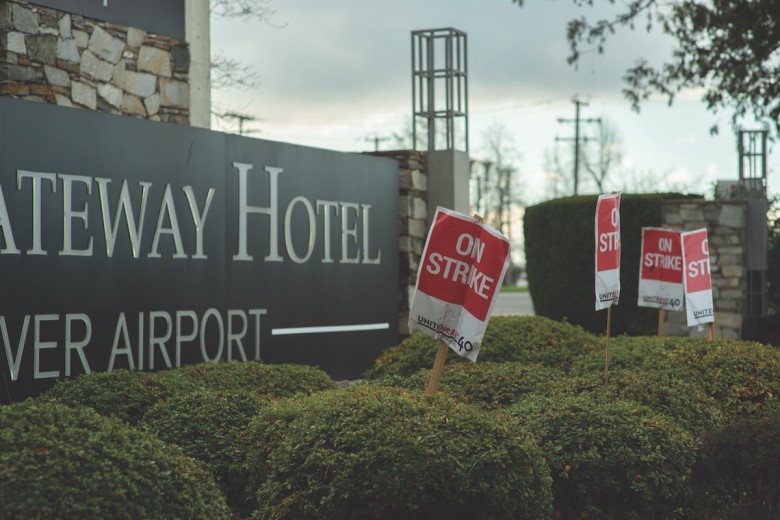
Tiffany Dang
In June 2021, an unprecedented heat dome brought suffocatingly high temperatures to B.C. and caused 619 heat-related deaths in one week. That summer, Riley, who requested her last name be omitted to protect her identity, was working as a server at a busy Vancouver restaurant, sweating through her mandatory all-black uniform.
“It was so brutally hot. We’d be out there in the sun on the patio. We had no air conditioning inside, and at one point – it was, like, a 32-degree day – I went to my manager and I was like, ‘It is way hotter in here than it should be.’ And it turns out they had the heating on all day,” she recalls.
As an industry standard, restaurant workers rarely get time for breaks and are constantly on the move. During another shift that summer, Riley remembers one of her co-workers fainting and another being sent home with heat stroke.
During the 2021 heat dome, WorkSafeBC reported 115 accepted heat stress claims, a third of which came from restaurants.
For vulnerable groups, the risk of heat stress rises at indoor temperatures over 26 Celsius, and temperatures over 31 C are considered dangerous. As summers get hotter each year, workers face an increased risk of heat-related illness and even death, especially those with minimal rest periods and limited access to hydration and cool spaces. WorkSafeBC reported an increase from an average of 41 accepted claims of heat stress per year between 2018 and 2020 to 115 during the 2021 heat dome, a third of which came from restaurants.
While not considered an at-risk industry by the B.C. government, workers in food service often labour around heat sources and in spaces without air conditioning, and they’re usually too busy during the hottest times of the day to take breaks. The precarious nature of the industry also heightens the risk of heat stress, since missing work due to the weather, reducing productivity to rest, or raising concerns with an employer could result in a loss of wages or retaliation from management.
Riley has worked in the restaurant industry for five years, through a slew of extreme weather events. She’s been forced to miss work when torrential rain or sudden snow has halted the public transit she relies on to commute. She’s struggled to breathe while serving customers who insist on sitting outside while the sky blooms orange with wildfire smoke. In Riley’s experience, management and customers are unlikely to make accommodations for the sake of workers, leaving her with no choice but to “grin and bear it.”
A legislative solution
The Worker Solidarity Network (WSN), an advocacy organization for non-unionized and precarious workers across B.C., began investigating the experiences of food service workers after an influx in heat stress complaints during the heat dome. “We know that that’s a space where workers’ voices aren’t always heard,” says Jen Kostuchuk, the WSN’s climate-labour project coordinator. “Precarious workers are already vulnerable. Now we add this layer of extreme weather, and this puts them at a complete disadvantage.”
Kostuchuk’s research, which includes findings gathered from 31 food service workers in B.C., reveals that existing legislative protections do little to protect workers. “We heard from a cook who worked in a couple of inches of water for a week during the floods. We heard from fast food workers with existing health concerns working in drive-thru windows while also living with asthma during the wildfires,” Kostuchuk recalls.
In the WSN’s final report released in spring 2023, 77 per cent of workers reported that their workplace did not have proper protections implemented during extreme weather. Based on these findings, the WSN issued a list of nine demands for climate labour justice, including a call for a maximum temperature policy and five days of paid climate leave for extreme weather events.
“As the climate changes here, our perceptions of what is an appropriate health and safety measure to protect workers needs to change as well.”
B.C. has no laws protecting workers from job and wage loss if they miss work due to extreme weather and Kostuchuk argues that the existing protections for workers who do work through extreme weather are insufficient. “As the climate changes here, our perceptions of what is an appropriate health and safety measure to protect workers needs to change as well,” she suggests.
As another heat wave swept the province in August 2023, the 10 hottest places in Canada were all in B.C. – a situation climate experts say will become more frequent as the climate crisis rages on. While wildfires and floods also pose serious risks to workers, in the WSN’s report 87 per cent of respondents reported that heat waves impact them most. Without legislation that reflects the increased safety measures required to address the rising temperatures and frequency of environmental disasters, workers – especially those who are low income and not unionized – will continue to bear the brunt of the harm.
Labour legislation that explicitly protects indoor and outdoor workers from heat stress through a maximum temperature policy would be a first in Canada, but internationally, it’s nothing new. Spain and Germany already have maximum temperature policies for workers. South of the border, California and Oregon also have occupational health and safety laws to protect workers from extreme heat, like mandatory cooling periods for workers above a certain temperature.
Elsewhere in Canada, other provinces are paying attention to the risk extreme heat poses to workers. In August 2023, the Ontario government proposed adding a new heat stress regulation to its Occupational Health and Safety Act that would specifically outline protections for workers during extreme heat.
To Riley, the enforcement of these kinds of protections could provide critical recourse for service workers in an industry where they don’t get much respect — from the public or their employers. “I think if you can’t guarantee that you can keep your workers safe, you shouldn’t be open during the hottest hours of the day,” she says. “Obviously it’s going to affect your profits. But I think we need to make a shift in work culture of prioritizing people over profit.”
The problem of enforcement
Jessica,* a food service worker in the Lower Mainland, says that rising temperatures are the worst part of her job, which she otherwise enjoys. Her work is busiest in the summer months and the store she works at has no air conditioning.
Working through the most recent August heat wave, “really sucked, to say the least,” Jessica says. She remembers that when she first got the job, the heat wasn’t so bad. “It was typical summer heat. And then over the past two years, it’s gotten noticeably worse.”
The store gets particularly hot in the evening, when a rush of customers fills the space. In the summer of 2022, a customer even called WorkSafeBC to report the extreme heat on the staff’s behalf, but since the inspectors came in the morning, “the store’s never as hot and they don’t see it as a problem,” Jessica recalls.
“If you’re working in the [drive-thru] window in the heat, and you don’t have a break from customers for three hours straight, and you can’t have water at your station, and you’re not allowed to leave the window or close the window when there’s a customer there, you don’t have a moment away from the heat.”
B.C.’s Workers Compensation Act, enforced by WorkSafeBC, provides some protections for workers during extreme heat. Employers are required to conduct heat stress assessments and ensure that workers have access to hydration and space to cool off. But according to Anelyse Weiler, an assistant professor of sociology at the University of Victoria, these policies aren’t sufficiently enforced, which makes it hard for workers to reap the benefits. “One of the challenges is there is a significant gap between workers’ rights on paper and workers’ rights in practice,” she explains.
Weiler describes heat protection policies as providing the foundation for better protection for workers, but emphasizes that legislation is only half the battle. She characterizes the recent push for stronger legislation as “a significant opportunity for the labour movement to ensure that these laws not only get on the books but that they are in fact enforced.”
In the WSN report, 68 per cent of respondents reported that their employer did not accommodate additional breaks for hydration during extreme heat, despite access to cool water being mandated by the Workers Compensation Act. While workers legally have the right to refuse unsafe work, Kostuchuk points out that many workers in food service are hesitant to speak up about workplace safety out of fear of retaliation exacerbated by the precarious nature of the industry.
“If you can’t guarantee that you can keep your workers safe, you shouldn’t be open during the hottest hours of the day,” Riley says. “Obviously it’s going to affect your profits. But I think we need to make a shift in work culture of prioritizing people over profit.”
Jessica attributes workers’ fear of retaliation as one of the reasons she and her co-workers hesitate to report their working conditions to WorkSafeBC. “None of the staff has called WorkSafe. It’s all been customers that have felt bad for us,” she says. “There is still that fear of, ‘is it going to be anonymous? Are they going to know it’s me? Will I get fired for it?’”
Pamela Charron, interim executive director of the WSN, says that extreme weather is just one of the many areas where workers’ rights are disregarded. “Workplace violations are an endemic problem. The reason being is [that] administrative bodies responsible for upholding rights and protections for workers aren’t enforcing them,” she explains. “Essentially, it’s like a tiny slap on the wrist when employers break the law.”
Even if a worker has the courage to report their employer, Jessica’s experience demonstrates that having the problem actually addressed poses a whole other challenge. Stronger legislation would give workers more recourse, but the B.C. government needs to improve enforcement to make a meaningful impact on workers’ safety. Weiler agrees: “To actively deter non-compliance, there’s enough of a punishment in place that employers will ensure that workers’ needs are being met so it’s not just relying on individual employers’ goodwill.”
Labour justice as climate justice
Aspen Hollier worked at a Lower Mainland Starbucks through six hot and smoky B.C. summers, their final one being during the 2021 heat dome. “The thing about Starbucks is the hotter it is outside, the busier it is because everybody else is hot and everybody else wants something refreshing,” they explain.
Even though the location they worked at had air conditioning, Hollier says the heat and smoke poured in from the drive-thru window and a constant flow of customers left little time to hydrate or cool off. “If you’re working in the window in the heat, and you don’t have a break from customers for three hours straight, and you can’t have water at your station, and you’re not allowed to leave the window or close the window when there’s a customer there, you don’t have a moment away from the heat.”
But while working through heat waves and forest fires, Hollier describes witnessing the mounting waste of plastic cups, straws, and packaging as the real “ringing noise” in their ear. “I would cry a little bit sometimes while I was working, just being so scared, and having to do a garbage run, and then seeing bags and bags and bags of garbage just being thrown into a dumpster. And I’m like, ‘What is this even for?’” they recall. “Thinking about how hot it is and what a dire situation we’re in and just having to be like, ‘Hi, welcome to Starbucks. What can I get for you?’ It was very grim.”
Weiler explains that the climate anxiety Hollier and many others face can be a debilitating barrier to climate organizing – but a potential solution could lie in the labour movement. “Even though climate change is one of the most significant threats to humanity, everyday workers often feel disempowered from participating in collective decisions about the environment,” Weiler says. “By contrast, unions really do provide channels for everyday workers to voice the things that they care about, through a collective voice, and to contribute to bigger policy change.”
“Unions do have the potential to give everyday people a collective democratic voice in pushing back against corporate power,” Weiler says. “And corporations are often quite afraid of what workers can accomplish when they’re united.”
Food service workers have extremely low unionization rates, but the wider labour movement has the power to influence policies beyond collective agreements and improve the material conditions and health and safety of all workers. Weiler points out that while Canada’s unions have yet to take on a major role in combatting the climate crisis, there is momentum within the labour movement to push for more sustainable climate and labour policies, especially from young organizers and alternative labour organizations like the WSN.
By highlighting the overlap between climate and labour justice, Kostuchuk hopes to centre the climate crisis as an issue around which the labour movement can rally and organize workers. “The intersection between climate and labour historically has been [thought of as] two different struggles. But seeing them as one combined fight might be a really good starting point,” she explains.
This year, 2023, brought another summer marred by climate catastrophe. July broke the record for hottest average temperatures worldwide and ushered in the worst wildfire season in B.C. history. As workers continue to labour through extreme weather, it’s time for the labour movement to stop ignoring the climate crisis and push for stronger protections for all workers.
“Unions do have the potential to give everyday people a collective democratic voice in pushing back against corporate power,” Weiler says. “And corporations are often quite afraid of what workers can accomplish when they’re united.”
*Jessica’s name was replaced with a pseudonym to protect her job.






